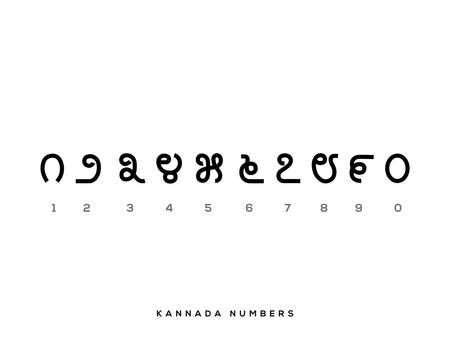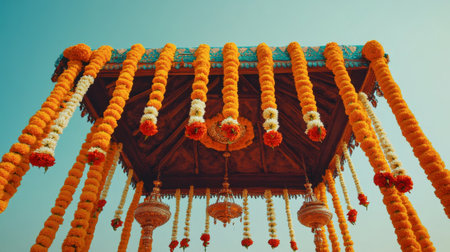1. Introduction to Dasha and Antardasha
In the vibrant tapestry of Vedic astrology, or Jyotish Shastra as cherished across Bharat, the concepts of Dasha and Antardasha form the heartbeat of predictive techniques. These ancient time cycles are not just celestial clocks; they are intricate maps guiding us through the ebb and flow of our karmic journey. For every individual born under the Indian sky, understanding one’s Dasha system is akin to decoding the rhythm of destiny – a dance choreographed by planetary energies, echoing the age-old wisdom of Rishis. The Dasha (major period) reveals broad themes in life, while Antardasha (sub-period) refines these energies with subtler nuances, much like the tabla and sitar harmonise in a Hindustani raga. Unveiling these systems allows us to attune ourselves with cosmic timing, offering profound clarity on periods of opportunity, challenge, and transformation. Whether you hail from Chennai or Chandigarh, this knowledge empowers you to walk your karmic path with greater awareness and grace, trusting that every phase holds its own sacred purpose within the grand symphony of existence.
2. The Significance of Vimshottari Dasha
Vimshottari Dasha stands as the most revered and widely-practised Dasha system in Vedic Astrology, profoundly influencing the life journeys of countless Indians. At its heart, Vimshottari Dasha is not merely a predictive tool; it is a spiritual companion that guides individuals through the subtle waves of karma and destiny. Deeply woven into Indian culture, this system is frequently referenced in family discussions, astrological consultations, and even during significant rituals such as marriages or housewarmings (Griha Pravesh). Its resonance goes beyond calculations—Vimshottari Dasha serves as a bridge between the celestial realm and daily life, offering clarity on why certain events unfold at particular times.
Cultural Resonance and Spiritual Harmony
The uniqueness of Vimshottari Dasha lies in its connection with the Moon’s Nakshatra at birth, anchoring it firmly in the psyche of Indian traditions. Elders often recall their Dasha periods to explain life changes, while priests recommend remedies based on ongoing Dashas. This system fosters a sense of acceptance and preparedness among families, encouraging surrender to divine timing (Ishwar ka samay) and nurturing resilience during challenging Mahadashas or Antardashas.
Structure of Vimshottari Dasha System
Vimshottari Dasha divides human life into 120 years, attributing specific planetary periods (Mahadashas) to each planet. Each Mahadasha is further subdivided into Antardashas (sub-periods), reflecting dynamic changes within an individual’s life journey. The table below illustrates the sequence and duration assigned to each planet:
| Planet (Graha) | Years in Mahadasha | Cultural Symbolism |
|---|---|---|
| Ketu | 7 | Detachment, Spiritual Tests |
| Venus (Shukra) | 20 | Love, Art, Material Comforts |
| Sun (Surya) | 6 | Ego, Authority, Vitality |
| Moon (Chandra) | 10 | Mental Peace, Motherhood |
| Mars (Mangal) | 7 | Courage, Conflict, Energy |
| Rahu | 18 | Karmic Lessons, Worldly Desire |
| Jupiter (Guru) | 16 | Wisdom, Expansion, Blessings |
| Saturn (Shani) | 19 | Karma, Discipline, Delays |
| Mercury (Budh) | 17 | Intellect, Communication, Trade |
A Spiritual Lens on Everyday Life
The subtle energy shifts brought by different Mahadashas and Antardashas are keenly felt in Indian homes. For instance, a Venus Mahadasha might inspire artistic pursuits or harmonious relationships, while a Saturn period could test one’s patience and perseverance. Astrologers across India encourage people to align their efforts with these planetary flows—a practice that infuses daily routines with mindfulness and devotion. Ultimately, Vimshottari Dasha not only decodes destiny but also empowers individuals to walk their paths with faith, humility, and hope.

3. Overview of Other Prominent Dasha Systems
While the Vimshottari Dasha system is widely recognised and practised across Bharat, several other Dasha systems hold significant value in Vedic Astrology, especially when considering regional preferences and diverse traditions. Let us explore some of the alternative Dasha systems like Ashtottari, Yogini, and Char Dasha, and understand their distinct relevance in various cultural contexts within India.
Ashtottari Dasha: A Tradition from Northern Bharat
The Ashtottari Dasha system, based on a cycle of 108 years, is predominantly followed in certain regions of North India. This system is particularly considered when Rahu occupies a Kendra (angular house) or Trikona (trine) in the native’s Janam Kundli (birth chart). Astrologers from regions such as Uttar Pradesh and Bihar often prefer Ashtottari for its precise calculation of planetary periods which are believed to suit those with specific planetary alignments. Its unique distribution of planetary periods offers an alternative perspective on life events compared to the more widespread Vimshottari method.
Yogini Dasha: The Divine Feminine Cycle
The Yogini Dasha system stands out for its mystical connection to the eight Yoginis—divine feminine energies revered in ancient Indian spiritual traditions. With a total span of 36 years, this Dasha is popular among astrologers seeking quick insights into life’s ups and downs, especially in matters related to destiny (Bhagya) and spirituality. Many South Indian practitioners use Yogini Dasha for analysing sudden events or spiritual progress, as each Yogini period brings a different flavour influenced by her symbolic attributes.
Char Dasha: The Jaimini Perspective
Char Dasha, developed under the teachings of Maharishi Jaimini, differs significantly from Nakshatra-based systems by focusing on zodiac signs (Rashis) rather than planets. This Rashi-based progression offers profound insights into one’s karmic journey and soul evolution. Astrologers from Karnataka, Maharashtra, and Bengal often turn to Char Dasha for deeper analysis of career growth, family lineage, and spiritual inclinations. Its flexibility allows interpretation tailored to specific life themes, making it highly adaptable for modern seekers.
Cultural Relevance Across Bharat
Each of these alternative Dasha systems reflects the rich diversity and wisdom embedded in Bharat’s astrological heritage. In practice, many astrologers blend these methods according to local customs or the unique requirements of a native’s birth chart. Whether you consult a jyotishi in Delhi using Ashtottari or a pundit in Chennai applying Yogini Dasha, these systems collectively enrich your understanding of time cycles and personal destiny. Embracing such variety ensures that Vedic Astrology remains vibrant and meaningful for every seeker across India’s vast spiritual landscape.
4. Understanding Antardasha: The Inner Wheels of Time
In the rich fabric of Vedic astrology, the concept of Dasha unfolds as a grand cosmic timeline. Yet, within this timeline, there exists a finer weave—the Antardasha. Decoding the layered structure of Antardasha within Mahadasha is akin to understanding the delicate threads that compose a vibrant Indian saree. While Mahadasha outlines the broader strokes of destiny, Antardasha crafts the intricate patterns, subtly influencing day-to-day experiences and life’s intimate turning points.
The Layered Structure: Mahadasha and Antardasha
Each Mahadasha period is subdivided into several Antardashas (also called Bhukti), which represent the sub-periods ruled by different planets. These Antardashas act as “inner wheels of time,” reflecting nuanced shifts in energy, fortune, and challenges. In Indian spiritual parlance, it is often said that while Mahadasha sets the stage, Antardasha directs the play—changing the mood, dialogue, and intensity at every scene.
How Antardasha Shapes Life Events
The influence of Antardasha within a Mahadasha can be profound. For instance, someone running a Venus Mahadasha with a Saturn Antardasha may experience themes of commitment or delay in relationships—a subtle narrative woven into the broader Venusian script. These sub-periods help astrologers decode why certain years or months feel dramatically different even when the overarching planetary ruler remains constant.
Sample Table: Mahadasha and Corresponding Antardashas
| Mahadasha Lord | Antardasha Sequence | Typical Duration (Years) | Cultural Insights |
|---|---|---|---|
| Mars | Mars, Rahu, Jupiter… | Varies (Months to Years) | Agni (Fire) energy; passion meets discipline |
| Venus | Venus, Sun, Moon… | Varies (Months to Years) | Shringar (Beauty) and Bhakti (Devotion) blend |
| Saturn | Saturn, Mercury, Ketu… | Varies (Months to Years) | Karma testing; introspection peaks |
A Living Tapestry: Personal Narratives Through Antardasha
This system reflects India’s timeless wisdom—life does not unfold in static phases but as a dynamic interplay of forces. Just as every raga in classical Indian music has its own tempo and mood within a larger composition, each Antardasha brings its unique flavour to one’s journey. Awareness of these periods empowers individuals to align their actions with cosmic rhythms, embracing change with resilience and grace.
5. Dasha System Interpretation: A Blend of Numbers & Intuition
When it comes to interpreting the various Dasha and Antardasha systems in Vedic astrology, Indian astrologers rely on a unique synthesis of mathematical precision and deep intuitive insight. The art of blending numbers with inner guidance is an age-old tradition, reflecting the wisdom handed down by our ancient rishis. Each Dasha period, governed by planetary lords and calculated with meticulous accuracy, sets a numeric rhythm to one’s life journey. But as every seasoned Jyotishi in India knows, numbers are only half the story.
Numerical calculations provide the structural framework—defining timelines, sequences, and the strength or weakness of planets during their ruling periods. These calculations are rooted in classic texts like the Brihat Parashara Hora Shastra and are revered for their scientific rigor. However, true mastery lies in how astrologers weave these numbers with their own intuition and spiritual awareness. This process often involves meditative contemplation, tuning into subtle energies, and even drawing from traditional Indian practices like mantra chanting or connecting with personal deities (Ishta Devata) for clarity.
For example, two individuals may have identical Dasha sequences mathematically, yet their life experiences can be vastly different. Here, the astrologer’s intuition—sharpened by years of sadhana (spiritual practice), study of family karma, and sensitivity to cultural context—becomes crucial. Many Indian astrologers invoke Ganapati or Saraswati before analyzing a chart, seeking divine blessings to guide their interpretations beyond mere logic.
This beautiful fusion of number science and inner knowing echoes India’s holistic worldview. It acknowledges that while cosmic timings can be decoded through calculations, the soul’s journey reveals itself through intuition—a sacred dance between Shastra (scripture) and Anubhava (personal experience). In this way, Vedic astrology becomes more than prediction; it transforms into an act of healing and empowerment for seekers across Bharat.
6. Cultural Influence on Dasha Practices Across India
India’s vibrant diversity is beautifully mirrored in the way different regions approach and interpret Dasha and Antardasha systems within Vedic Astrology. While the core principles of Dashas remain rooted in ancient texts, cultural nuances, local languages, and spiritual beliefs have shaped unique interpretations and practices across the subcontinent.
North vs. South: A Tale of Two Traditions
In North India, especially among Hindi-speaking communities, the Vimshottari Dasha is considered the gold standard. Phrases like “Dasha chal rahi hai” or “Shani ki Antardasha mein ho” are everyday expressions reflecting how people attribute life events to planetary periods. Conversely, in South India—particularly Tamil Nadu, Andhra Pradesh, and Kerala—astrologers may favor Ashtottari or Kaalachakra Dasha, integrating them with Dravidian spiritual traditions. Here, you’ll hear terms like “Dasa Bhukti” used in daily conversation, and family astrologers often play a central role during major life decisions.
The Bengali Touch: Mysticism and Ritual
Bengal’s rich astrological heritage brings its own flavor to Dasha interpretations. The term “Maha Dasha” is commonly used, and rituals during transition periods—especially when Rahu or Ketu Dashas begin—are deeply embedded in community customs. Astrologers here often blend Tantra insights with classical Jyotish wisdom for holistic guidance.
Western India: Gujarati & Marathi Perspectives
In Gujarat and Maharashtra, business-minded families frequently consult astrologers before starting new ventures, keenly aware of their current Dasha cycles. The phrase “Aapni Dasha sharu thai chhe” (Our Dasha has started) or “Bhagya badalne wali antardasha” (Antardasha that changes destiny) reflects both linguistic pride and faith in cosmic timing.
Sikh and Muslim Beliefs: Syncretic Approaches
While Sikhism generally emphasizes self-effort over astrology, many Punjabi families still refer to planetary periods as “Samay da Chakkar.” Among Indian Muslims, some communities incorporate Hindu-Jyotish Dashas alongside Islamic lunar calendars for personal milestones—a testament to India’s syncretic spirit.
A Living Tradition: Community Wisdom
Ultimately, whether it’s the reverence seen at temples in Tamil Nadu during Saturn’s Sade Sati or the lively debates among Rajasthani pandits about which Dasha system offers more accuracy, every region adds its unique color to Vedic Astrology’s tapestry. These cultural inflections ensure that Dasha predictions are not just technical calculations but living traditions that guide hearts, homes, and hopes across India.
7. Choosing the Right Dasha System for Your Horoscope
When it comes to decoding your life journey through Vedic Astrology, selecting the most suitable Dasha and Antardasha system for your Kundli is a vital step. With several systems like Vimshottari, Ashtottari, Yogini, and Kalachakra Dashas available, the question naturally arises: which one aligns best with your unique life story? Let’s explore how context, region, and spiritual inclination guide this choice in the rich tapestry of Indian astrological tradition.
Context Matters: The Story Behind Your Chart
Just as every spice has its place in Indian cuisine, each Dasha system reveals different flavours of destiny. For instance, Vimshottari Dasha is most commonly used across India because it is considered universally applicable, especially when the Moon is strong and well-placed in your Kundli. However, if your chart has special planetary combinations or you are seeking answers about specific aspects of life—like career or spiritual growth—an astrologer might recommend using Yogini or Kalachakra Dasha instead.
Regional Traditions and Their Influence
India’s vast cultural landscape brings diverse traditions into astrology as well. For example, Ashtottari Dasha finds more resonance in North India, especially among communities who follow traditional Parashara methods. South Indian astrologers sometimes prefer Chara or Niryana Dashas for their unique approach to timing events. Thus, consulting an astrologer familiar with your regional background often ensures that interpretations feel more authentic and relatable.
Spiritual Inclination: Following Your Dharma
Your spiritual leanings also play a crucial role in selecting a Dasha system. In India, some seekers are deeply drawn to systems that emphasise soul evolution and karmic patterns, such as the Kalachakra or Jaimini Dashas. These systems resonate strongly with those on a path of sadhana (spiritual practice), where understanding subtle shifts in consciousness takes precedence over material predictions.
Guidance from Gurus and Astrologers
Choosing the right Dasha system often involves seeking guidance from experienced Jyotishis (astrologers) or gurus who understand not just your birth chart but also your life situation and aspirations. Don’t hesitate to ask questions about why a particular Dasha is recommended for you—Indian tradition encourages dialogue and learning through shared wisdom.
Listening to Your Inner Voice
Ultimately, Vedic Astrology is both a science and an art deeply rooted in intuition. Many Indians believe that listening to your “antar-atma” (inner self) helps you align with the cosmic rhythm revealed by your chosen Dasha system. As you explore these ancient cycles, let your heart guide you towards what feels most true—because the best astrological guidance always resonates at a soul level.
In summary, choosing the right Dasha system for your horoscope is a highly personal journey shaped by context, regional traditions, spiritual inclination, and trusted guidance. Let this process be an invitation to connect more deeply with your roots—and discover the cosmic blueprint written uniquely for you.


